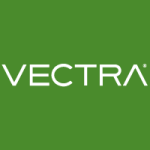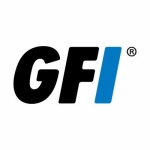What is our primary use case?
We needed a security tool with features like:
- Exploit detection
- Vulnerable Protocol Validations
- Malware communication blocking
- Easy administration
We found these features in the Check Point Intrusion Prevention System. It's the exact protection required for our infrastructure.
We managed to increase the level of business security thanks to this blade provisioned within our Check Point gateways.
Thanks to the use of this tool, we could avoid malware that might be installed in our infrastructure. It offers prompt detection.
We also needed to be able to have protection against emerging threats during Microsoft updates on our Windows servers.
How has it helped my organization?
This tool gave us much more protection for areas that are not covered with the use of the gateways.
One of our great concerns is the patching of servers where Internet access is opened and where we may have vulnerabilities. Thanks to Check Point's Intrusion Prevention System (IPS), we could keep our environment safe.
It provides a centralized environment by being unified with the administration of our gateway environments with management through Check Point Security Management. It is easy to use and has large dashboards that help us make decisions that help us continue to improve security.
What is most valuable?
Check Point's Intrusion Prevention System (IPS) provides us with many important features such as:
1- A centralized environment, managed by the security management portal.
2- Real-time protection against threats, generating security so that we can act immediately when we have a threat.
3- Protection backed with thousands of signatures of prevention and malicious behavior.
4- The reports are useful in helping to verify the threats where we can see the level of severity in order to be able to take action.
It really is a complete tool.
What needs improvement?
Check Point's Intrusion Prevention System (IPS) may improve in the following fields:
- They should have a cost improvement. Despite being a blade, this is expensive.
- They do not have a separate console.
- The documentation accessible by the manufacturer is generally for versions R80 or less. Some features or configurations have changed, which makes a more efficient and faster implementation difficult.
- The costs are only visible through a partner who provides you with the details. We would like them to be public so that we do not only have to view the costs through them.
For how long have I used the solution?
We use this blade for a branch in our cloud environment. We have it in order to be able to support against intrusions for at least three years now.
What do I think about the stability of the solution?
We have cluster environments and we have found its stability to be quite good.
What do I think about the scalability of the solution?
In cluster and VSS environments in Azure, the scalability is robust.
Which solution did I use previously and why did I switch?
Previously we did not use an IPS tool. It wasn't until the business need was realized when that we started the validations of which tool to implement.
What's my experience with pricing, setup cost, and licensing?
It is always important to validate the costs and characteristics of the available tools. I recommend finding a partner that can provide that support to correctly deploy what is necessary.
Which other solutions did I evaluate?
It is very important to always look for documentation, and characteristics and be able to compare them to make an informed decision based on security needs. In our case, we already have tools within our GWs environment, so it was easy to add this product.
What other advice do I have?
It is a good tool. However, you must have a GWs environment in use to be able to add it.
Which deployment model are you using for this solution?
Hybrid Cloud
Disclosure: My company does not have a business relationship with this vendor other than being a customer.
















